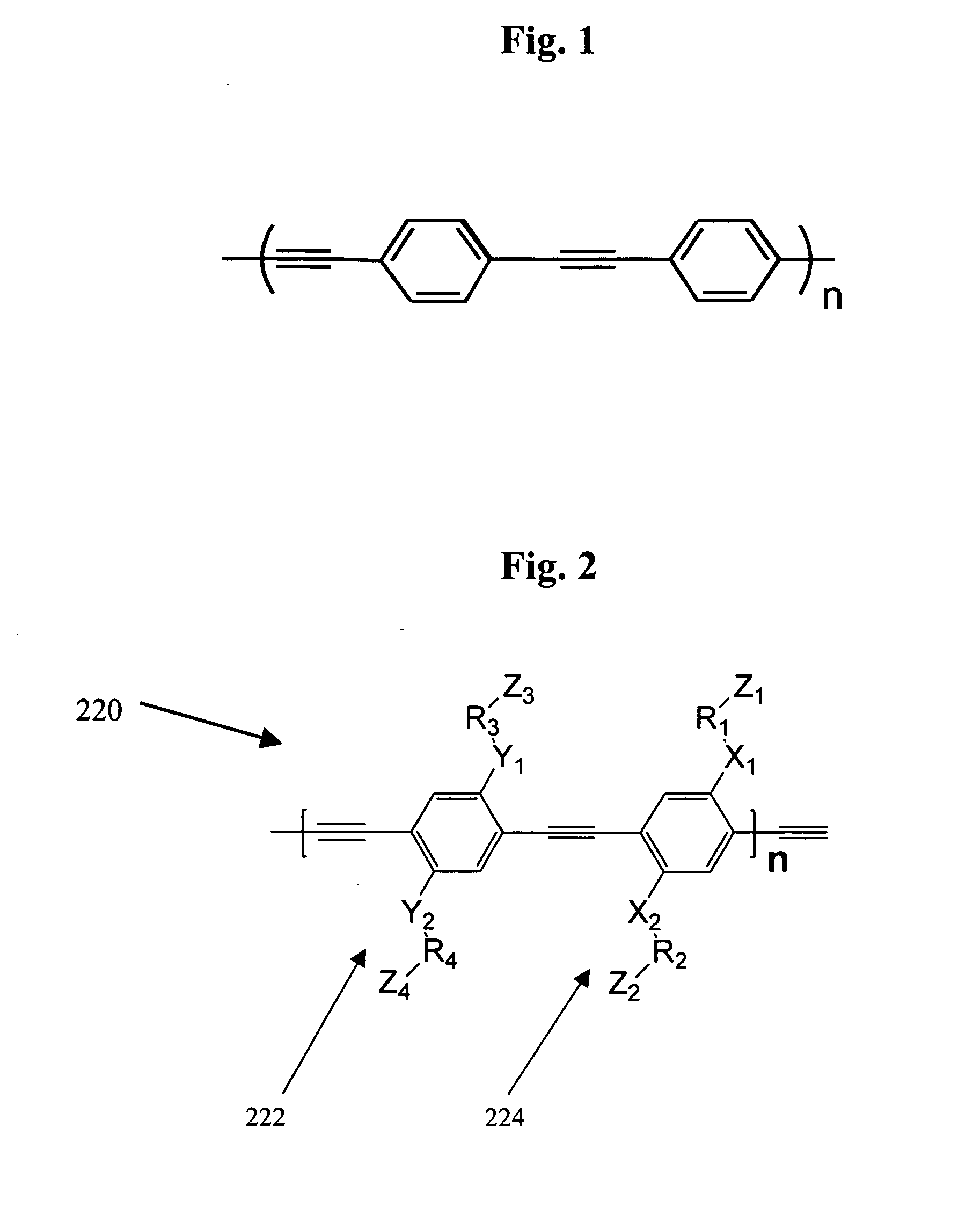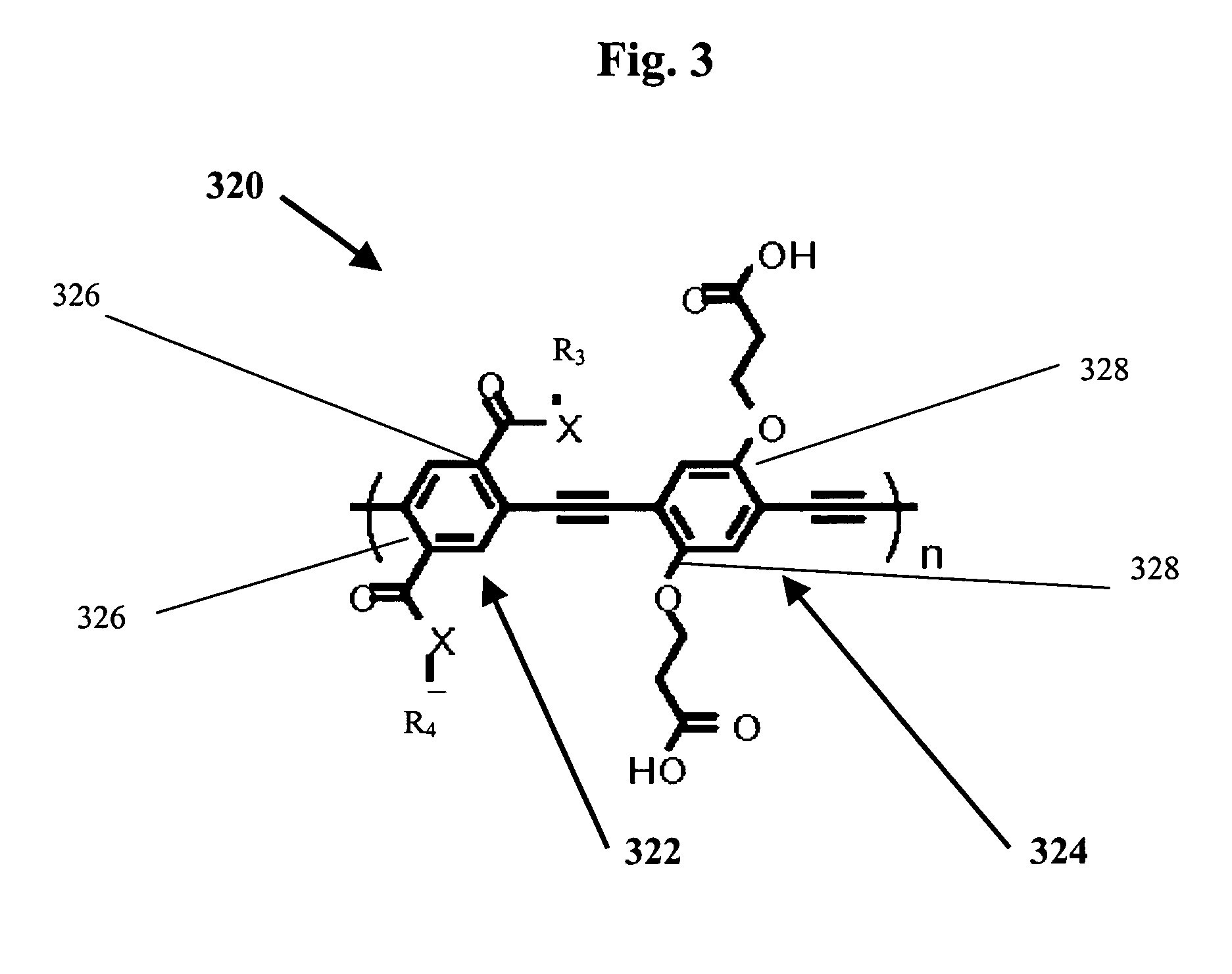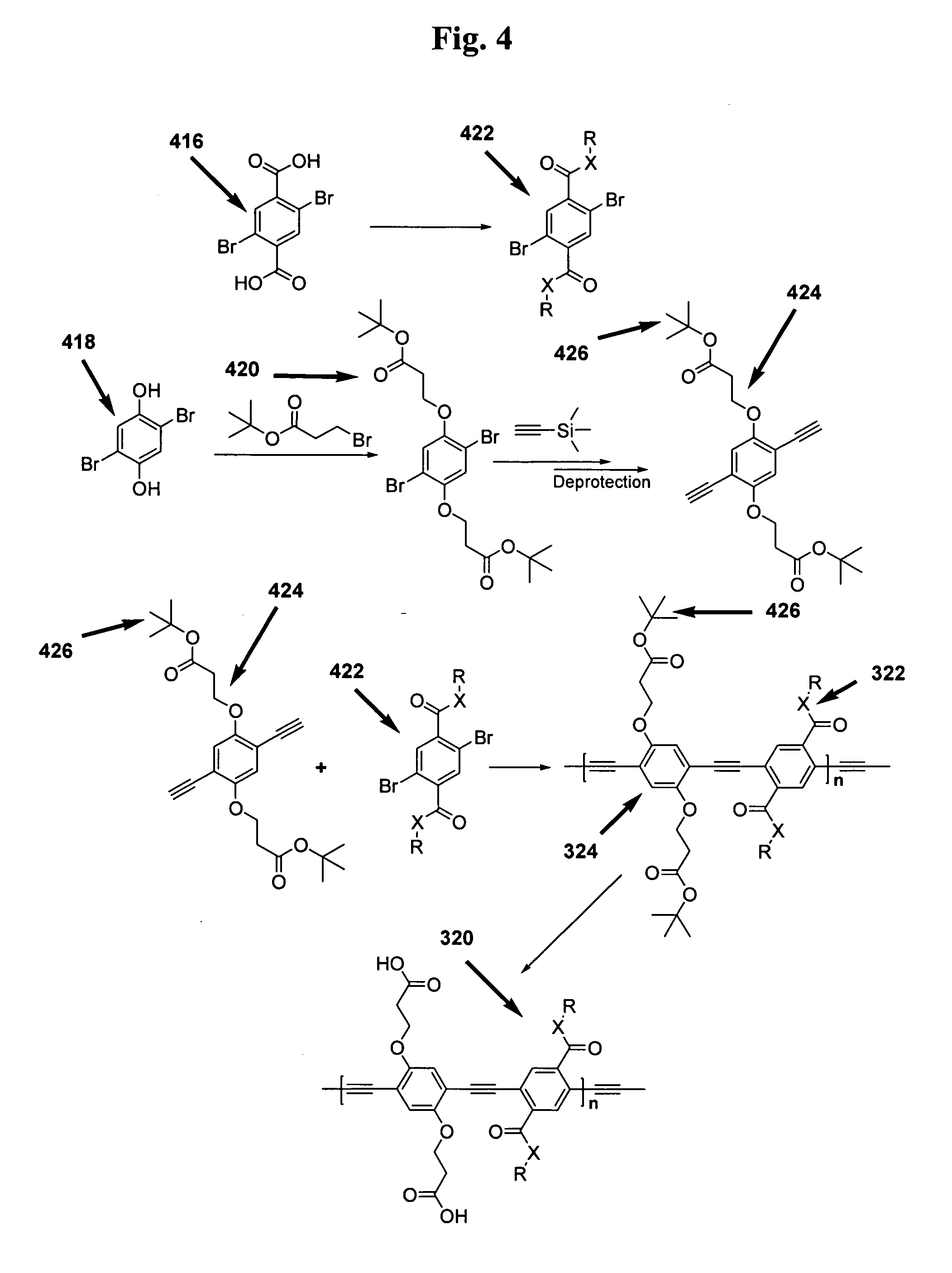Methods for the synthesis of modular poly(phenyleneethynlenes) and fine tuning the electronic properties thereof for the functionalization of nanomaterials
a technology of modular polymer and nanomaterials, applied in the direction of non-metal conductors, conductors, organic conductors, etc., can solve the problems of carbon nanotubes being dissolved in organic solvents, carbon nanotube intrinsic properties are significantly changed by covalent side-wall functionalizations, and polymer is very inefficient in wrapping small-diameter single-walled carbon
- Summary
- Abstract
- Description
- Claims
- Application Information
AI Technical Summary
Benefits of technology
Problems solved by technology
Method used
Image
Examples
example 1
Synthesis of a Donor / Acceptor PPE Platform
[0116] The synthesis of polymer platform 1000 of FIG. 10 will now be described in the following paragraphs. Polymer platform 1000 is an example of a polymer having “n” monomer units, each monomer unit having one acceptor monomer portion and one donor monomer portion.
[0117] In this Scheme 1, monomer portion 4 comprises the first characterized monomer portion 1002 illustrated in FIG. 10. Preparation of 1, 2 and 3 is now described.
[0118] 1,4-didecyloxybenzene (1): A 1-L, three-necked flask, equipped with a reflux condenser and mechanical stirrer is charged under argon atmosphere with 1,4-hydroquinone (44.044 g, 0.4 mol) and potassium carbonate, K2CO3, (164.84 g, 1.2 mol), and acetonitrile (ACS grade, 500 mL). 1-Bromodecane (208.7 mL, 1.0 mol) was added and the reaction mixture was then heated to reflux under argon flow for 48 h. The hot solution was poured into an Erlenmeyer flask charged with water (1.5 L) and stirred with a magnetic bar ...
example 2
A PPE Platform Having Donor / Accepter Monomer Portion Ratios Other Than 1:1
[0134] Modular PPE's are not limited to having one donor monomer portion and one acceptor monomer portion per monomer unit of the polymer. For example, the following Scheme 5 is for synthesis of PPE having a donor / acceptor monomer portion ratio of 3:1. Third monomer portion M3 is provided for the extra donor phenyl reactants to preserve the stoichiometry of one diethynyl phenyl reactant alternating with one halo-substituted reactant in the polymer product.
[0135] Synthesis of PPE Having a Donor / Acceptor Monomer Portion Ratio of 3:1: A 2000-mL, oven dried two-necked flask, equipped with a reflux condenser, and magnetic bar stirring was charged with toluene / diisopropylamine (4:1; 1100 mL) and was degassed at room temperature by constant argon bubbling for 3 h. M1 (15 mmol; 0.5 eq.), M2 (30 mmol), M3 (15 mmol; 0.5 eq.), (Ph3P)4Pd (1 mol %), and CuI (2.5 mol %) were added under argon atmosphere. The reaction mix...
example 3
Dispersions of Exfoliated Nanomaterial Using Modular Poly(phenyleneethynylene)
[0138] Modular poly(phenyleneethynylene) polymers 7 and 8 were prepared according to Example 1. The polymers were mixed individually with multi-walled carbon nanotubes (MWNTs) and a dispersion / solubilization solvent in the amounts as indicated in Table 1. The mixtures were sonicated at 25° C. for about 30 min to produce dispersions of exfoliated nanotubes. After sonication, each of the mixtures had formed a stable solution. The MWNTs used in the present example are commercially available from the Arkema Group, France (Grade 4062).
TABLE 1Dispersions of Exfoliated Nanotubes Using Modular PPEConc. ofPPEMWNTsModularPPE:MWNTsDispersionMWNTsNo.(mg)PPE (mg)weight ratioSolvent (mL)(mg / mL)*715003000.2:1Methylethyl-6 mg / mLketone(MEK, 250)8200010000.5:1Water8 mg / mL(250 mL)
*based on MWNT material only (excludes polymer material)
[0139] The dispersions of exfoliated nanotubes are uniform and stable for at least two ...
PUM
| Property | Measurement | Unit |
|---|---|---|
| Mass | aaaaa | aaaaa |
| Mass | aaaaa | aaaaa |
| Dispersion potential | aaaaa | aaaaa |
Abstract
Description
Claims
Application Information
 Login to View More
Login to View More - R&D
- Intellectual Property
- Life Sciences
- Materials
- Tech Scout
- Unparalleled Data Quality
- Higher Quality Content
- 60% Fewer Hallucinations
Browse by: Latest US Patents, China's latest patents, Technical Efficacy Thesaurus, Application Domain, Technology Topic, Popular Technical Reports.
© 2025 PatSnap. All rights reserved.Legal|Privacy policy|Modern Slavery Act Transparency Statement|Sitemap|About US| Contact US: help@patsnap.com



